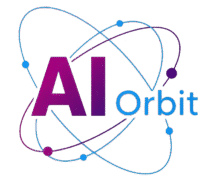The artificial intelligence (AI) revolution is reshaping industries at an unprecedented pace, promising to generate trillions of dollars in economic value. As investors scramble to identify the next big winners, many eyes are fixed on the usual suspects – the chipmakers, the leading software giants, and the tech behemoths often dubbed the “Magnificent Seven.” However, sometimes the most significant opportunities lie slightly off the beaten path, with companies quietly building the foundational infrastructure for this new era. One such company that merits a closer look, and could emerge as a surprising dark horse in the AI race, is Oracle.
THE AI REVOLUTION: UNPRECEDENTED GROWTH AND DEMAND
The narrative surrounding artificial intelligence has shifted dramatically from a futuristic concept to a present-day reality, with its impact reverberating across global markets. Industry forecasts project the AI market to burgeon into a multi-trillion-dollar industry within just a few years, signifying a monumental opportunity for companies poised to capitalize on this exponential growth. This isn’t merely a fleeting trend; it’s a fundamental technological shift that is driving an insatiable demand for computing power, specialized hardware, and robust cloud infrastructure capable of handling the immense computational requirements of AI models.
The scale of this demand is truly unparalleled. Enterprises, from startups to established multinational corporations, are racing to integrate AI into their operations, products, and services. This widespread adoption fuels a relentless need for scalable, high-performance computing resources. Whether it’s for training complex AI models, deploying AI-powered applications, or processing vast datasets, the underlying infrastructure is paramount. Companies that can reliably provide this critical backbone are in a prime position to thrive, even if they aren’t the household names typically associated with AI innovation in the public eye. The sheer volume of investment and development in AI suggests that the market is vast enough to support not just the current frontrunners, but also other established players with strategic advantages.
ORACLE’S JOURNEY: FROM DATABASE GIANT TO CLOUD POWERHOUSE
To understand Oracle’s potential in the AI revolution, it’s essential to appreciate its extensive history and strategic evolution. Founded in the late 1970s, Oracle quickly rose to prominence as a global leader in database management software. Its foundational technology became indispensable for countless businesses worldwide, forming the backbone of enterprise data systems. However, unlike many legacy technology companies that struggled to adapt to new paradigms, Oracle demonstrated remarkable foresight and agility.
Recognizing the shift towards cloud computing, Oracle made a pivotal move in 2013, beginning the arduous but necessary process of transitioning its core database offerings and enterprise applications to the cloud. This strategic pivot laid the groundwork for its current standing. In more recent times, as AI began its ascent, Oracle further refined its cloud strategy to specifically address the unique and demanding requirements of AI customers. This involved developing and enhancing its cloud infrastructure services (Oracle Cloud Infrastructure, or OCI) to be highly optimized for AI workloads, offering the necessary performance, scalability, and cost-effectiveness that AI development demands. This continuous evolution has not only preserved its market relevance but has also propelled its annual revenue and net income into the billions, with a noticeable acceleration driven by the burgeoning AI boom.
WHY ORACLE STANDS OUT IN THE CLOUD AI LANDSCAPE
In a competitive cloud market dominated by a few major players, Oracle has carved out a unique and compelling niche, particularly for AI workloads. What truly differentiates Oracle’s cloud offering for AI customers is its commitment to unparalleled flexibility and specialized capabilities. Firstly, Oracle offers a pioneering multicloud service. This allows users the crucial opportunity to simultaneously leverage and seamlessly integrate services from various cloud providers. For businesses that rely on diverse ecosystems or wish to avoid vendor lock-in while optimizing for specific workloads, this multicloud approach is a significant advantage, ensuring they can harness the best-of-breed services from different providers without friction.
Secondly, Oracle Alloy is another innovative solution that empowers customers to operate their own Oracle clouds, tailored for their specific clientele. This allows for greater control, data residency, and customization, which is particularly attractive to large enterprises, government agencies, or service providers looking to build their own sovereign cloud environments while benefiting from Oracle’s underlying technology. Beyond infrastructure, Oracle also boasts a comprehensive portfolio of AI-driven cloud applications. These applications span critical business functions, from advanced supply chain management solutions that leverage AI for predictive analytics and optimization, to sophisticated customer relations management (CRM) tools enhanced by AI for personalized interactions and deeper insights. This end-to-end capability, from foundational infrastructure to AI-powered applications, positions Oracle as a holistic partner for businesses navigating the AI landscape.
THE SURPRISE FACTOR: WHY ORACLE IS AN UNDERVALUED AI PLAY
When discussions turn to the leaders of the AI revolution, the spotlight invariably shines on a familiar cohort of technology giants. Companies like Nvidia, renowned for its indispensable AI chips, and software innovators such as Palantir Technologies, often dominate headlines and investor conversations. These entities have indeed been instrumental in driving market gains and are undeniably central to the AI narrative. However, Oracle’s role in this transformative period, while substantial, has largely remained in the background, making it a “surprise winner” in the eyes of many. This relative lack of mainstream attention, particularly when compared to the highly visible “Magnificent Seven” stocks that led market gains last year, presents a unique opportunity for discerning investors.
Despite its lower profile in the popular AI discourse, Oracle has been diligently and effectively building out its AI capabilities, pushing its cloud infrastructure to the forefront of AI development. Its strategic investments and technological advancements have quietly but decisively propelled its AI business into a league where it can truly compete with, and often complement, the more publicized AI leaders. The “surprise” element lies in its established enterprise footprint, its robust balance sheet, and its systematic expansion into high-growth AI infrastructure, all while often being overlooked in favor of flashier pure-play AI stocks. This gap between its substantial contributions and its public perception is precisely what makes Oracle a compelling, yet often undervalued, AI investment.
IMPRESSIVE FINANCIALS: A DEEPER DIVE INTO ORACLE’S PERFORMANCE
Oracle’s recent financial performance provides concrete evidence of its burgeoning success in the AI sector. The company’s cloud infrastructure revenue, a key indicator of its AI-driven growth, demonstrated an impressive surge of 52% to reach $3 billion in a recent quarter. This figure underscores the rapid adoption of its OCI services by businesses demanding high-performance, scalable infrastructure for their AI workloads. Furthermore, this growth wasn’t isolated; all other segments of Oracle’s business also registered robust double-digit growth, indicating a broad-based strength driven by its cloud strategy and AI integration across its product portfolio.
Perhaps one of the most compelling and forward-looking financial indicators is Oracle’s remaining performance obligations (RPO). This metric represents the total value of signed contracts that have yet to be billed as revenue, essentially providing a clear window into the company’s future revenue visibility. In the most recent quarter, Oracle reported that its RPO soared by an astounding 41% to reach an impressive $138 billion. This massive backlog of committed future revenue signifies not just strong current demand, but also sustained, long-term confidence from customers in Oracle’s cloud and AI offerings. It effectively serves as a robust pipeline, assuring investors of substantial revenue streams in the coming periods.
Further bolstering this optimistic outlook are the candid remarks from Oracle’s chairman and chief technology officer, Larry Ellison. In a recent earnings call, Ellison characterized the demand for cloud infrastructure as “almost insatiable,” confessing, “I mean I don’t know how to describe it. I’ve never seen anything remotely like this.” He even shared an anecdote about a customer requesting all of Oracle’s available capacity, regardless of its geographical location, highlighting the extreme urgency and scale of current demand. Such commentary from a seasoned industry veteran like Ellison provides invaluable qualitative insight into the unprecedented market conditions driving Oracle’s growth.
BROADER MARKET INDICATORS: VALIDATING AI’S MOMENTUM
The extraordinary demand cited by Oracle’s leadership is not an isolated phenomenon; it is broadly corroborated by observations and financial disclosures from other leading technology companies across the AI ecosystem. For instance, Nvidia, the dominant force in AI chip design, has consistently reported soaring demand for its graphical processing units (GPUs), which are the critical engines for AI model training and inference. This intense demand from the hardware side directly translates into a need for robust, high-performance cloud infrastructure to host and manage these powerful chips.
Similarly, major hyperscale cloud providers and AI developers such as Meta Platforms and Alphabet have publicly reiterated their plans for multi-billion-dollar investments in AI infrastructure and research for the current year. These massive capital expenditures signal their unwavering commitment to expanding their AI capabilities, which in turn fuels demand for complementary cloud services and strategic partnerships. Even specialized AI software analysis companies like Palantir have spoken of unrelenting demand for their platforms in recent quarters. This collective chorus of enthusiastic demand from diverse segments of the AI industry—from chips to software to large-scale infrastructure—paints a clear picture. The market growth forecasts for AI are not just theoretical; they are manifesting in real-world, tangible demand that implies the current momentum is not only sustainable but likely to continue for a considerable period, creating a fertile environment for companies like Oracle.
ORACLE’S VALUATION: A GROWTH STOCK AT A REASONABLE PRICE
When evaluating Oracle as a potential AI winner, its current valuation is a critical factor for investors. The stock presently trades at approximately 29 times its forward earnings estimates. While this figure is slightly lower than its recent peak, which surpassed 30 times, it remains above its average trading levels over the past year. At first glance, a price-to-earnings multiple of 29 might seem elevated to value investors, especially when compared to slower-growth legacy tech companies. However, for a company demonstrating Oracle’s current growth trajectory, particularly in the high-growth AI cloud infrastructure sector, this valuation is widely considered to be quite reasonable.
The key to understanding this valuation lies in contextualizing it against Oracle’s surging revenue, its massive and growing remaining performance obligations (RPO), and the “insatiable” demand for its cloud services. The company is not merely growing; it is undergoing a significant transformation, positioning itself squarely at the center of one of the most impactful technological shifts in decades. This potent combination of accelerated revenue growth, strong future visibility through its RPO, and leadership commentary indicating unprecedented demand, suggests that Oracle’s current valuation offers a compelling entry point for a growth stock. As the AI revolution continues to unfold and its foundational role becomes more widely recognized, Oracle’s valuation could continue to appreciate, reflecting its true potential as a key enabler of artificial intelligence worldwide.
CONCLUSION: ORACLE’S POTENTIAL AS AN AI REVOLUTIONARY
The AI revolution is a marathon, not a sprint, and while early leaders have captured significant attention, the long-term winners will be those companies that provide indispensable, scalable, and flexible infrastructure. Oracle, with its deep roots in enterprise technology and its aggressive, strategic pivot to AI-optimized cloud services, is precisely such a player. Its impressive financial performance, driven by soaring cloud infrastructure revenue and an unprecedented backlog of future contracts, clearly demonstrates its robust position.
Chairman Larry Ellison’s remarks about “insatiable” demand further underscore the unparalleled market opportunity Oracle is capitalizing on. While the company may not always dominate the headlines like some of its more flashy counterparts, its foundational contributions to the AI ecosystem are undeniable and increasingly critical. For investors seeking exposure to the AI revolution beyond the most obvious choices, Oracle presents a compelling case. It is a seasoned technology giant that has skillfully adapted to new paradigms, quietly building a powerful platform for the future of artificial intelligence. As the AI revolution continues to unfold, Oracle is well-positioned to emerge not just as a participant, but as a surprising and significant winner.

